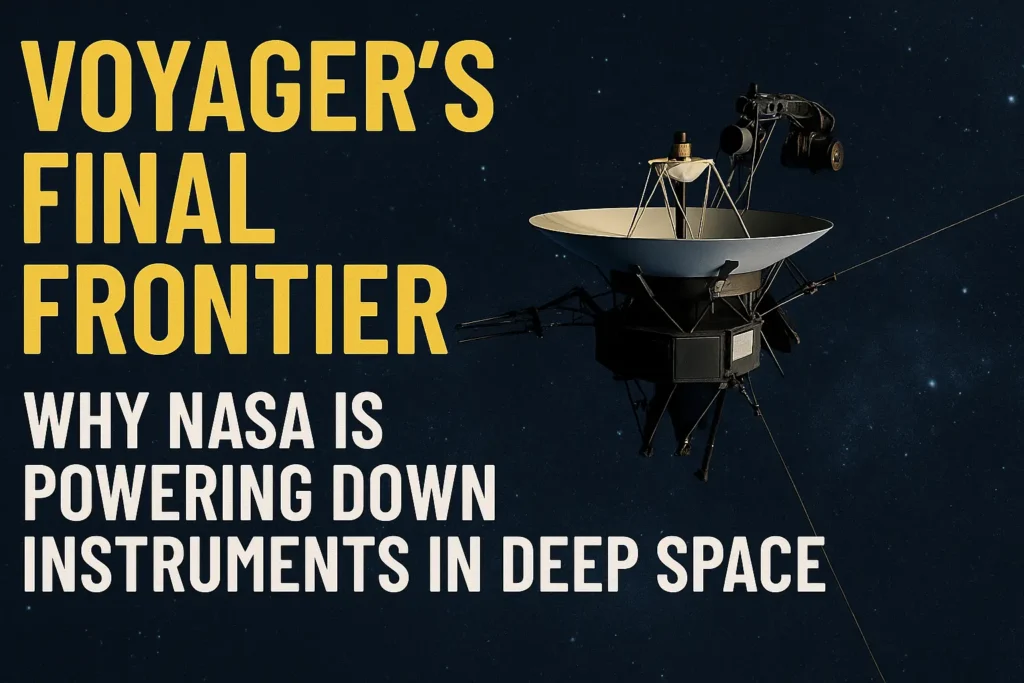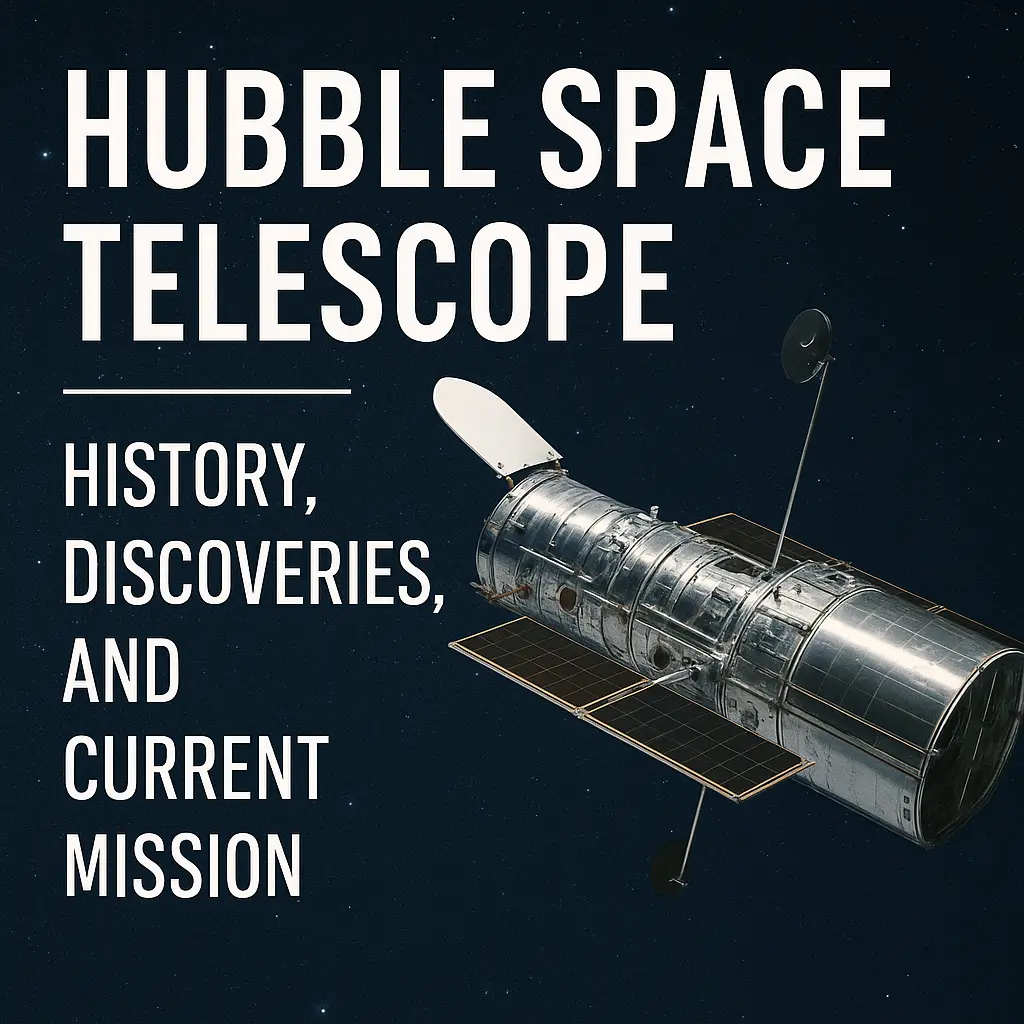After nearly 48 years of groundbreaking exploration, NASA’s twin Voyager spacecraft—humanity’s most distant emissaries—are still transmitting data from interstellar space. With power levels steadily declining, NASA has begun selectively shutting down scientific instruments to prolong the mission’s operational lifespan into the 2030s. This article explores the recent deactivations, ongoing scientific contributions, and the enduring legacy of the Voyager program.
Diminishing Power Supply: A Strategy to Prolong Voyager’s Life
Launched in 1977, Voyager 1 and Voyager 2 rely on radioisotope thermoelectric generators (RTGs), which lose approximately 4 watts of power per year due to the natural decay of plutonium-238. In response, engineers at NASA’s Jet Propulsion Laboratory (JPL) are implementing a phased shutdown of instruments to conserve energy.
“The Voyagers have been deep space rock stars since launch,” said Suzanne Dodd, Voyager Project Manager at JPL. “But electrical power is running low. If we don’t turn off an instrument on each Voyager now, they would probably have only a few more months of power before we would need to declare end of mission.”
Recent and Upcoming Shutdowns:
- October 2024 – Voyager 2’s Plasma Science Instrument (PLS) shut down
- February 25, 2025 – Voyager 1’s Cosmic Ray Subsystem (CRS) to be deactivated
- March 24, 2025 – Voyager 2’s Low-Energy Charged Particle (LECP) Instrument to be shut down
These decisions are vital for extending the Voyager Interstellar Mission (VIM) into the 2030s, ensuring at least one working science instrument on each spacecraft.
What Voyager Continues to Study in Interstellar Space
Since leaving the heliosphere—the protective bubble created by the Sun—Voyager 1 and 2 have made groundbreaking observations. Key milestones include:
- Voyager 1: Entered interstellar space in August 2012
- Voyager 2: Followed in November 2018
Current Measurements Include:
- Interstellar magnetic fields
- Cosmic rays and energetic particles
- Plasma waves, revealing interstellar plasma density and movement
Despite power limitations, Voyager 1’s Magnetometer (MAG) and Plasma Wave Subsystem (PWS) remain operational. These instruments provide invaluable data that support fields like heliophysics and astrophysics.
“Every bit of additional data we’ve gathered since the original mission is not only valuable bonus science, but a testament to engineering excellence,” said Patrick Koehn, Voyager Program Scientist at NASA.
Retired Instruments and Their Contributions
Although some instruments are being powered down, their past contributions are crucial to our understanding of the cosmos:
- Cosmic Ray Subsystem (CRS) – Detected cosmic ray changes that confirmed Voyager 1’s departure from the heliosphere
- Low-Energy Charged Particle (LECP) Instrument – Offered insights into particle behavior at the heliopause
- Plasma Science Instrument (PLS) – Measured plasma density to confirm interstellar entry for Voyager 2
These systems helped define what lies beyond the solar system, a domain no spacecraft had reached before.
The Challenge of Communicating Across Billions of Miles
The vast distance from Earth presents major communication challenges:
- Voyager 1: Over 15 billion miles (25 billion km) away
- Voyager 2: Over 13 billion miles (21 billion km) away
- Signal travel time:
- Voyager 1: 23+ hours
- Voyager 2: ~19.5 hours
“Every day could bring our last message—or another interstellar discovery,” said Linda Spilker, Voyager Project Scientist at JPL. “We’re pulling out all the stops to keep the mission alive.”
For comparison, see how NASA tracks deep-space missions through the Deep Space Network (DSN).
A Brief History of the Voyager Program
Originally launched to explore the outer planets, the Voyager spacecraft revealed stunning details about:
- Jupiter and Saturn (Voyager 1 & 2)
- Uranus and Neptune (Voyager 2 only)
After completing their planetary missions, the Voyager Interstellar Mission began in 1989, defined by three key phases:
- Termination Shock – Where the solar wind slows below supersonic speed
- Voyager 1: Crossed at 94 AU (2004)
- Voyager 2: Crossed at 84 AU (2007)
- Heliosheath – A turbulent zone marking the heliosphere’s outer shell
- Interstellar Space – Beyond the heliopause, where the Sun’s influence wanes
Voyager 1’s entry into interstellar space was confirmed via plasma wave oscillations, while Voyager 2’s transition included both plasma and particle data, giving scientists the most comprehensive look yet at this boundary.
Conclusion: A Legacy That Defies Limits
The decision to deactivate certain Voyager instruments is a necessary strategy to extend humanity’s longest-running space mission. Despite these shutdowns, the spacecraft continue to deliver unprecedented data from a realm once thought unreachable.
The Voyager mission remains a shining example of human ingenuity and scientific persistence, proving that our reach can extend far beyond Earth—and for far longer than ever imagined.
As long as power and communication last, Voyager 1 and Voyager 2 will continue their journey, carrying humanity’s curiosity to the stars.



